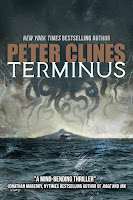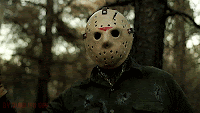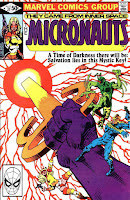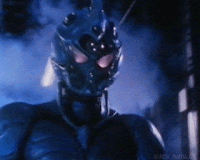Okay, now back into it for real.
I haven’t done one of these in a while, so forgive me if I’m a little rambly to start.
There’s a dialogue issue that I’ve seen pop up in books and movies and comics, and it was something I’ve never been able to pin down. It was one of those things where I could tell the story was kind of losing its way, but I couldn’t figure out why. Definitely wouldn’t be able to explain it. What was the common thread? Why did the dialogue go from good (or at least adequate, in some cases) to eye-rolling?
And then, as so often happens in nature, a pterodactyl brought a bundle of enlightenment to my doorstep.
Two months ago I was watching this Saturday geekery movie about a group of women who were getting out of the city for what was supposed to be a bachelorette weekend and had instead turned into a “that cheating bastard didn’t deserve you” weekend. A lot of initial, awkward conversations about was it him, was it me, why didn’t I see it sooner, usually cut off by none of that, let’s drink, look, that park ranger’s checking you out. And then, y’know, pterodactyls attacked. As they do. So now this weekend in the mountains is a battle for survival.
Except…
Every time the women ended up somewhere—in a car, in a cabin, hiding behind a boulder, whatever—the conversation would drift back to was it him, was it me, why didn’t I see it sooner. Long conversations about that relationship, and relationships in general and that cheating bastard. And not, y’know, the pterodactyls stomping across the roof or gathered outside the cave or tearing apart the park ranger on the front lawn. Seriously, this happened again and again and again. Not the park ranger, the conversation thing.
It was then that enlightenment struck.
But first, one quick-but-related segue, since it’s been a while…
An idea I’ve brought up here several times is plot vs story. Plot is external. It’s what’s going on outside my characters. Story is internal. It’s all the things inside my characters that they’re dealing with.
It’s also worth noting that plot is active while story tends to be reactive. Plot is things happening, story is how my characters deal with those things and are shaped by them. My characters respond to events based on who they are, but the outcomes affect how they respond to future events. A fancier term for this is a character arc.
So the story advances the plot while the plot advances the story. When it’s done right it’s a beautiful, symbiotic relationship between the two elements, each one lifting the other to new heights. As all the links in these past few paragraphs imply, it’s something I’ve talked about a few times.
Also—one last bit—you may have heard something like this before but your college literary professor insisted “story” actually refers to the driving narrative of the protagonist as seen through the lens of something. Cool. Whatever. If you want to call these two concepts yin and yang or fabula and sjuzhet or Mirabel and Bruno, that’s all great. Whatever works for you. Don’t get hung up on what we’re calling it and ignore the idea behind it.
Okay, got all that? Cool. Let’s get back to the pterodactyls.
So in the situations I described above, there are clear, active plot events going on, but the characters are using this time to talk about our heroine’s story. Yeah, the park ranger’s being torn apart outside but what if this means I’ll never get married? I mean, so many of my relationships go bad like this. They always have, ever since high school.
And if that made you smile a little bit, the funny part is I’m not exaggerating. That’s exactly how it happened in the movie. That was the actual topic of discussion during that specific event.
Now, granted, it’s an extreme example. And I understand why this particular group of filmmakers did it. To be honest, I’ve seen them do it a lot on a few different projects. They’ve created a plot they can’t actually put on film, for whatever reason, so they’re trying to fill space with all these random deep, emotional, and completely unbelievable conversations.
But I think that’s not why this gear-shift feels so inherently fake. I mean, people talk about weird things at weird times. We laugh at odd moments. We finally remember the thing and blurt it out at a perhaps inappropriate time. There’s nothing wrong with doing it now and then. Although I’m sure the park ranger would appreciate maybe being a little more the center of attention during this difficult time for him.
So here’s my new rule of thumb for you. Not a law, not an ironclad thing that applies to every single situation. But I think it’s a good rule of thumb to keep in mind when characters start giving monologues.
Talking about plot feels honest. Talking about story feels contrived.
It makes sense when characters talk about plot. We accept it. Of course they’ll be talking about the things going on around them, the events that will have an affect on them or other people. This is believable dialogue.
On the flipside, when characters talk about story–when they’re talking more about what’s going on inside them than what’s going on around them–it often feels wrong.. Bringing up all that internal stuff, forcing it out into the world, it tends to feel… well, forced. Unnatural. Especially when none of it relates to current events.
NOW… before anyone rushes angrily to the comments to correct me, toss out an example, and point out how awesome it is when characters talk about their feelings, I’d like to point out two things. One is what I just said a minute ago. This is a rule of thumb. It’s a guideline. All writing advice is iffy at best, and I’m openly telling you this one’s a little more iffy than most.
Second is that, in most our favorite books and movies, when characters are talking about their inner feelings and conflicts, they’re using that wonderful tool we call subtext. Chris isn’t talking about their feelings, ha ha ha, no. They’re talking about the carwash, and how great it’s going to be when the mortgage is paid off and we can all, y’know, work on other things. And if Sam wants to stick around to help run the carwash, I mean, yeah, sure, that’d be, yeah, great. Cool.
Want a solid example? In Spider-Man: Homecoming, when Tony Stark tells Peter Parker to hand over his suit, is Peter actually worried about losing the suit? I mean, he still has his old, homemade one. And the web fluid and the shooters, those are his own design. As we see later, he can still fight crime, just like he did before Stark came knocking. So losing the suit can’t really be that big a deal, right?

Except we all understand this scene isn’t actually about the suit. It’s about Peter being terrified his future is suddenly slipping away from him. He’s a poor, nerdy kid from Queens who had a shot at the big leagues, at having Tony’s approval, of being part of Stark Industries and part of the Avengers, at finally being—in his mind—someone who matters. And suddenly it’s all being taken away.
But Peter doesn’t talk about being scared. He talks about the suit. And how he’ll be nothing without it.
So if I’ve got a character about to deliver a heartfelt monologue about their inner feelings and desires and conflicts… maybe I should pause and look at it again. Yeah, there’s a chance it’s perfect as is. This is one of those cases when someone can flat-out say exactly what they’re feeling with no subtext and it sounds fantastic
But maybe—especially if I’m doing this two or three or four times—it’d be better if a lot of it was implied rather than explicitly said. Maybe I could bring it out it with some plot-relevant subtext. Or maybe I could show it with their actions and decisions. Story advancing the plot and all that.
Because it just makes people uncomfortable when we talk about that stuff.
Next time, unless anyone has some other suggestions, I thought I’d blather on a bit about that other type of structure.
Until then… go write.
(wow, haven’t said that in a while)










